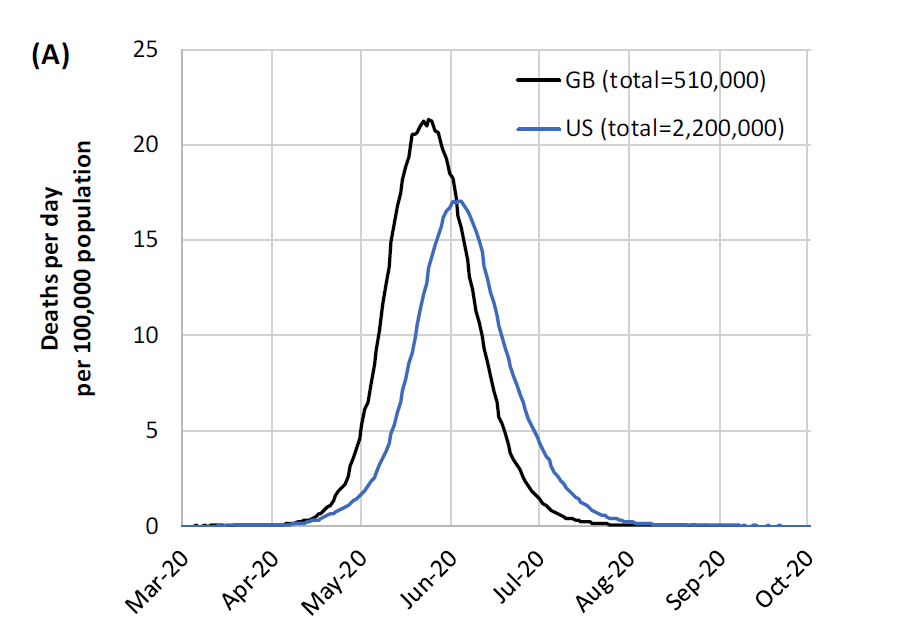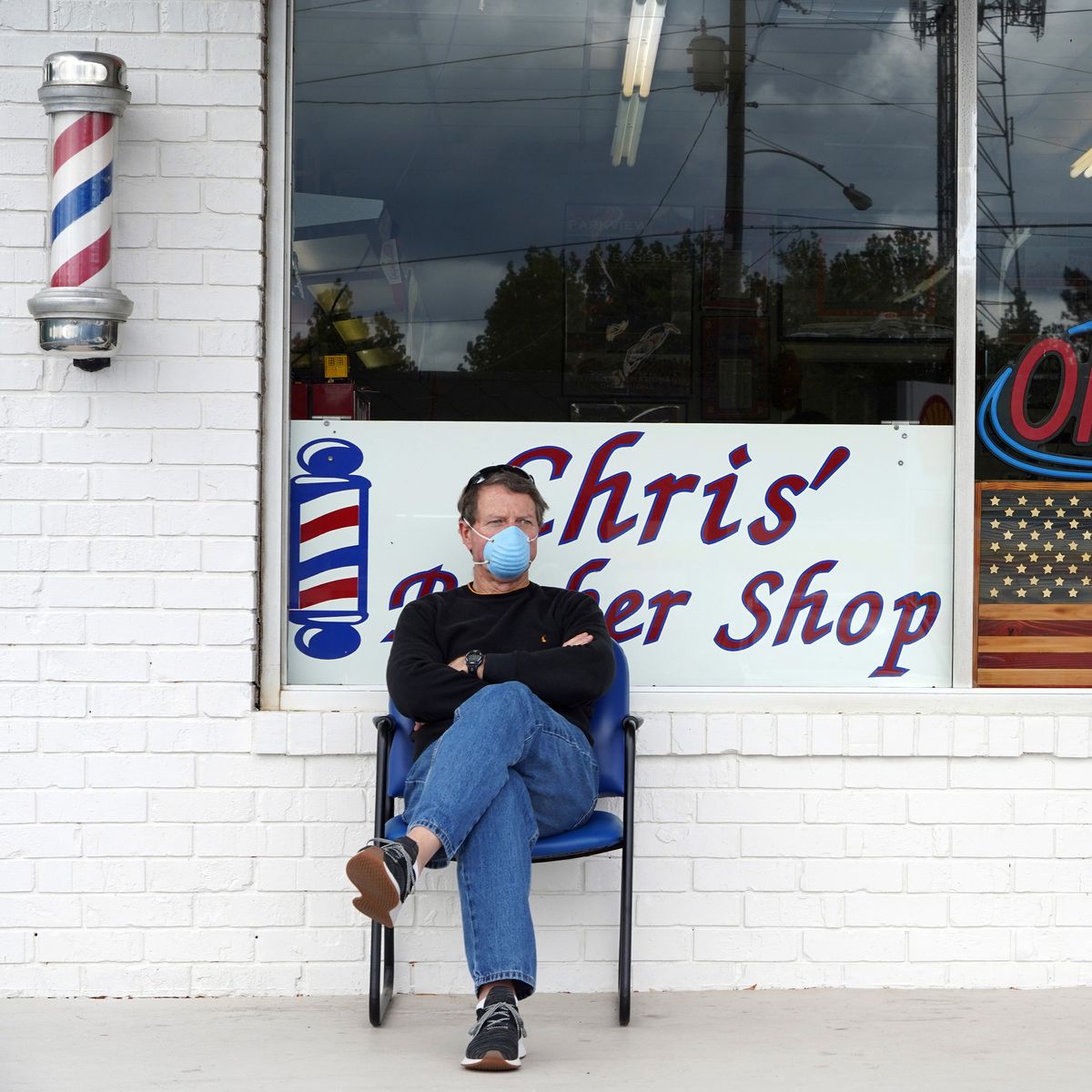The discussion surrounding the coronavirus lockdown would be so much clearer if the media was forthcoming in explaining what the initial purpose of the lockdown was.
Once again: it was not to stop infections. No one ever thought you could stop infections of a respiratory virus from spreading in a society once it was there. The purpose was to “flatten the curve.” We all remember hearing that term, but apparently most people thought it meant “stopping people from getting infected.”
What “flatten the curve” actually meant was stretching out the timeframe of infections so that the hospitals were not overwhelmed, meaning everyone could get treatment. The death gap in the Imperial College Fat Chicks graphs was based on availability of treatment, not the infection rate.
That’s where the 2.2 million dead came from. The gap between that and the 220,000 dead was an issue of hospital capacity. Ten times more people would die because the hospitals would be overwhelmed, Chubby Chaser Ferguson claimed.
The number of infections and illnesses was considered to be a static number, which would not be affected by government policy.
So obviously, we should have opened back up as soon as it was clear that the hospitals would not be overwhelmed. The problem was, if we’d opened up within the first two weeks, the economy wouldn’t have collapsed, and that was obviously the goal of all of this. If that wasn’t the goal, they would have just quarantined the vulnerable and let everyone else get on with their lives. The entire situation only makes sense if your goal is to destroy the economy.
Now that Georgia is starting to open back up, they’re promoting the concept of mass death. But of course, in theory, everyone has to open up sometime, and when they do open up, people will get sick and some people will die. Everyone always understood that, but then they began saying that we could just wait until a vaccine was developed, and the whole thing became “we’ll just remain locked down indefinitely.”
The idea you can do an experiment of this scale on the population without having any plan at all is simply insane, but that’s the underlying idea here.
Now that Georgia is reopening, teams of experts are calculating whether the rate at which people will sicken or die from the novel coronavirus will rise in the coming weeks, and whether we’ll need more hospital beds to care for them.
The news is generally bleak. Revised projections show that unless people act as if they remain on lockdown, infections and deaths by COVID-19 are bound to rise. The only disagreement among experts is by how much and when.
Yes – the virus exists.
Everyone agrees that it exists.
But people’s lives also exist, and framing the entire civilization around trying to keep people in their 70s and 80s alive forever while destroying the futures of children and young people is absolute lunacy.
This is never how the discussion is framed, of course.
Even a small bump in how much Georgians move about their communities could cause the state’s death toll to tick upwards. A new projection by the Institute for Health Metrics and Evaluation, a model favored by the White House, assumes many Georgians will stay at home and summer heat will suppress the virus. Still, IHME revised its cumulative death toll figures upwards to nearly 5,000 by August, an increase of more than 140% percent.
Other models show that if Georgians return closer to their pre-pandemic ways, the state could experience a devastating, exponential spike of infection similar to those in hard-hit areas such as New York City. One created through a collaboration between Massachusetts General Hospital, Harvard Medical School, Georgia Tech and Boston Medical Center projects that if restrictions end, cumulative deaths will most likely creep up through July, then skyrocket well beyond 10,000 the next month if residents stop sheltering in place after May 25.
Cell phone and other data, however, already show that Georgians have begun to travel more often.
The Georgia Department of Public Health is preparing for different scenarios by working with modelers from Georgia Tech, Massachusetts Institute of Technology, IMHE, and the University of Pennsylvania to project local health care needs, a spokeswoman said. It plans to share the results with hospitals and local health agencies.
But even top experts have not rehearsed this kind of crisis, said University of Texas at Austin Professor Lauren Ancel Meyers, who researches ways to project the spread of disease using data science and statistics.
“We did not have a play book for this,” Meyers said.
On Wednesday, DPH logged 898 new confirmed COVID-19 cases and 23 new deaths.
The virus exists.
Everyone is going to come in contact with the virus.
If it kills them, it is going to kill them.
That was the original perception, and that is the only perception that makes any sense. We can try to protect those that are vulnerable, but protecting the entire society is impossible.
So basically, when states reopen, we’re going to be in the same situation we were when we closed, except with a completely collapsed economy and a highly stressed medical system which has had to make massive cuts due to the economic collapse. It will be summer, so the virus will be around less, but winter is always coming.
They’re going to play up Georgia as a mass death zone and continue to tell people this can be avoided forever if they just remain locked in their houses. Because the plan, obviously, is to keep people locked down forever.
And yes, they’re just casually talking about how the government is using cellphones to monitor everyone now. No freedom, lad – because virus.
There was an interesting piece of data that came out of that spying program: people will drive to a state that is open so they can act like a normal person. It’s a kind of “vacation to real life.”
Of course, the media spins this as a threat, and implies it means we need a federal lockdown that blocks Georgia from being allowed to open.
One week after Georgia allowed dine-in restaurants, hair salons and other businesses to reopen, an additional 62,440 visitors arrived there daily, most from surrounding states where such businesses remained shuttered, according to an analysis of smartphone location data.
Researchers at the University of Maryland say the data provides some of the first hard evidence that reopening some state economies ahead of others could potentially worsen and prolong the spread of the novel coronavirus. Any impetus to travel, public health experts say, increases the number of people coming into contact with each other and raises the risk of transmission.
“It’s exactly the kind of effects we’ve been worried about,” said Meagan Fitzpatrick, an assistant professor at the University of Maryland School of Medicine.
We are living so far outside of basic reality that it is difficult to even comprehend it.
One thing’s clear: we’re not getting out any time soon.
And it’s very likely Georgia is going to get locked up again.



